Vivo U10 Is Competitive Enough But Is It Better Than Xiaomi Devices?
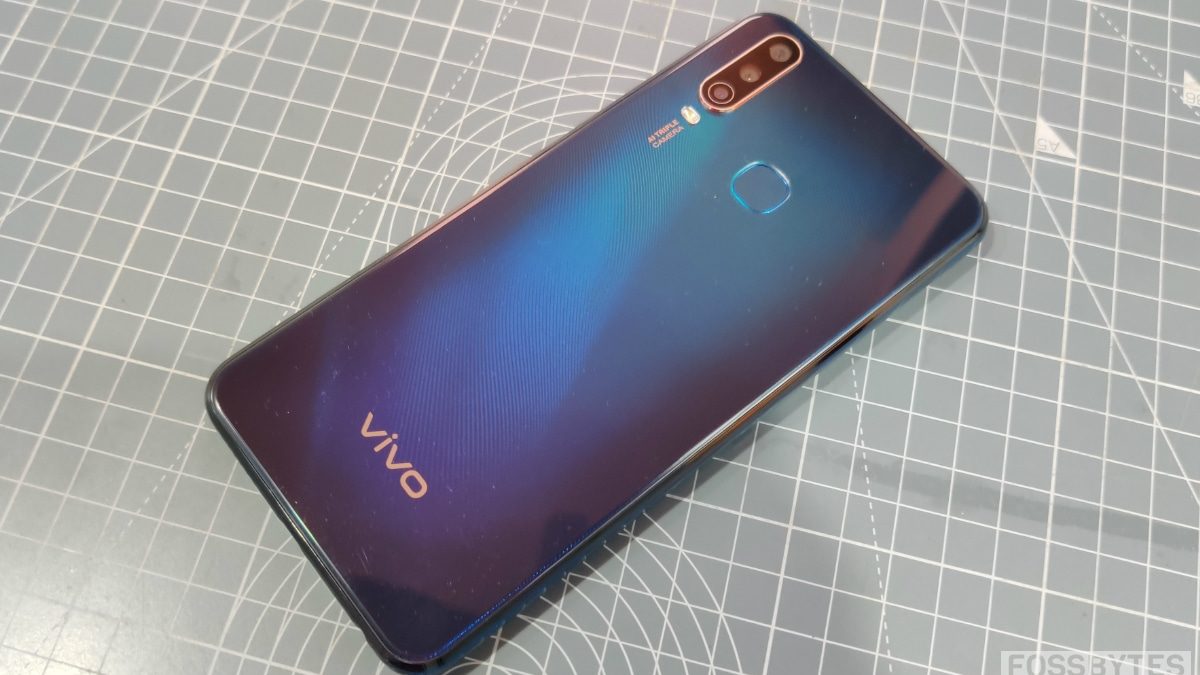
Vivo is among the companies such as Realme and Samsung that are trying to make their mark in the budget smartphone region to dethrone Xiaomi. The Chinese company has been making budget smartphones to cater to the Indian audience and its most recent one is the Vivo U10 – a part of its new U series.
The Vivo U10 brings along a number of features that make it a competent device against Xiaomi’s recent affordable smartphone dubbed the Redmi Note 8. However, is this an option you could consider? Read on for my review to find out:
Vivo U10 Review
Design
The Vivo U10 is a decent-looking smartphone that follows the design ethos of most smartphones out there. If you look at the device, you won’t find any element of distinction. However, that doesn’t make it a device with good looks. Also, the color options it comes in (I got the one in Electric Blue) are all enticing enough. As a reminder, the device has another color variant called the Thunder Black.

The smartphone has a triple-camera setup at the back placed at the top left corner. The camera module is followed by an LED flash. The back has a fingerprint scanner and the company’s logo at the bottom part. The front is equipped with a waterdrop notched display that sports lesser bezels on three sides of the smartphone and slightly more bezels at the bottom end.

The left side of the device has a SIM tray while the right side has a volume rocker and the power on/off button. While there is nothing at the top part of the smartphone, the bottom part has a 3.5mm audio jack, the micro-USB port (Yes, there’s no Type-C port), and the speaker grille (they appear in the same sequence.)
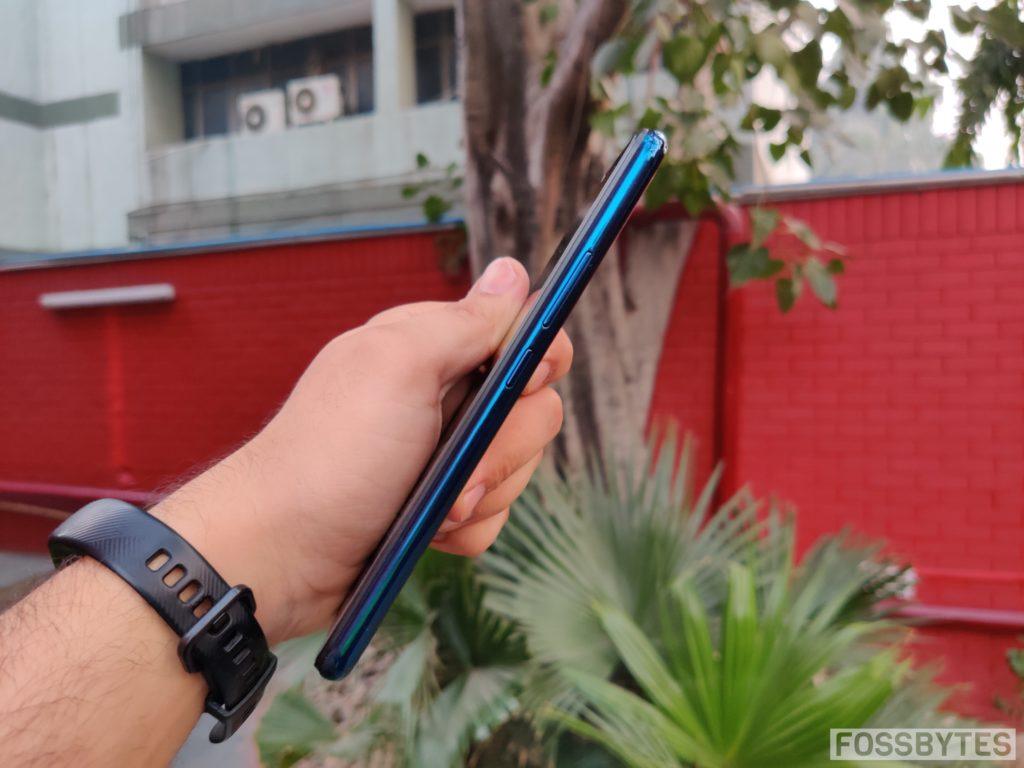
The Vivo U10 has good looks but the absence of a Type-C port and some weight prove to be a turndown in the looks department.
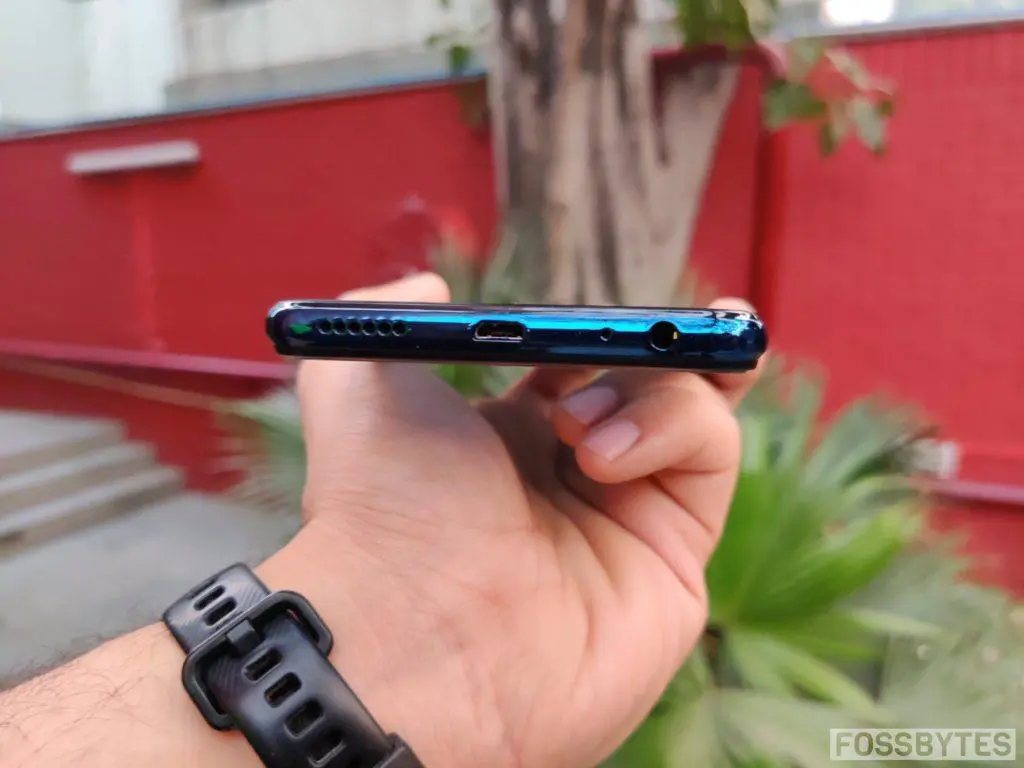
However, if I have to compare it with the Redmi Note 8, Vivo U10 doesn’t attract a lot of smudges, which is positive for it.
Display
The Vivo U10 has a 6.35-inch IPS display that comes with a screen resolution rated at 1,544 x 720 pixels. The display has a waterdrop notch at the top, which is quite common for all smartphones these days, especially the budget ones.
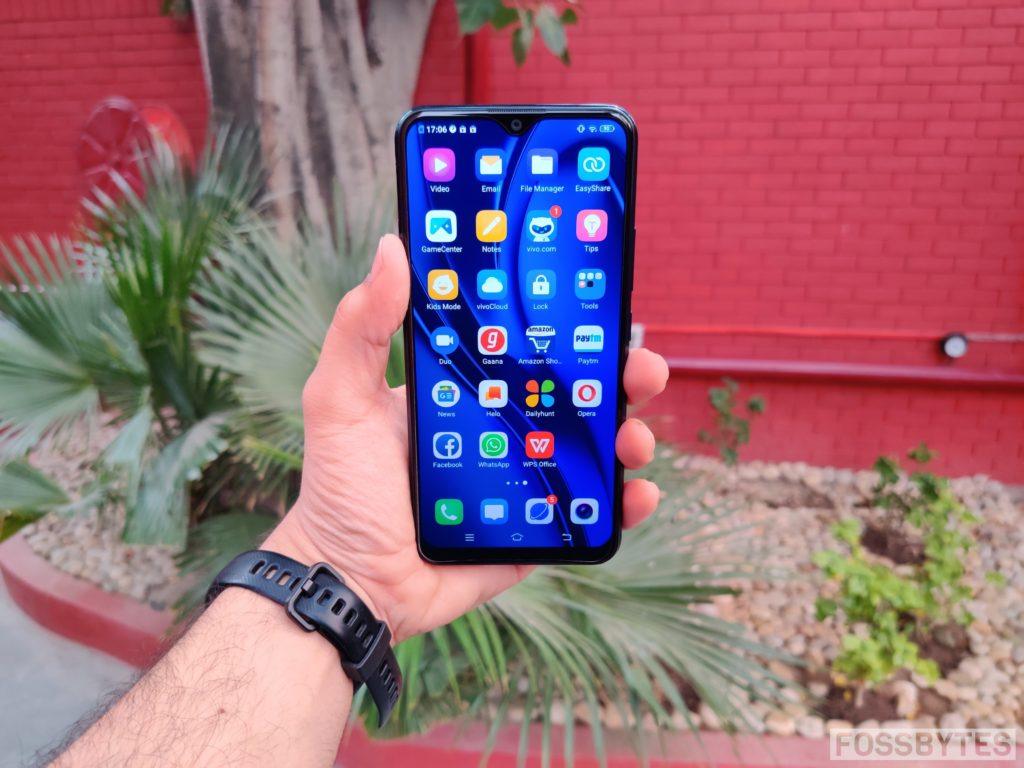
The display is decently-lit and the viewing angles are fine too. Watching videos was good, however, the HD+ display was that clear while watching content.
In addition to this, you can also adjust display settings such as the dark mode, temperature adjustments, eye protection, among the usual ones.
Cameras
The budget smartphone is home to four cameras in total. There are three at the back (a 13MP primary sensor, an 8MP wide-angle lens, and a 2MP bokeh camera sensor). The one at the front stands at 8MP.
The smartphone supports LED flash, HDR, AI Beauty, AI filters, and slow-motion videos.
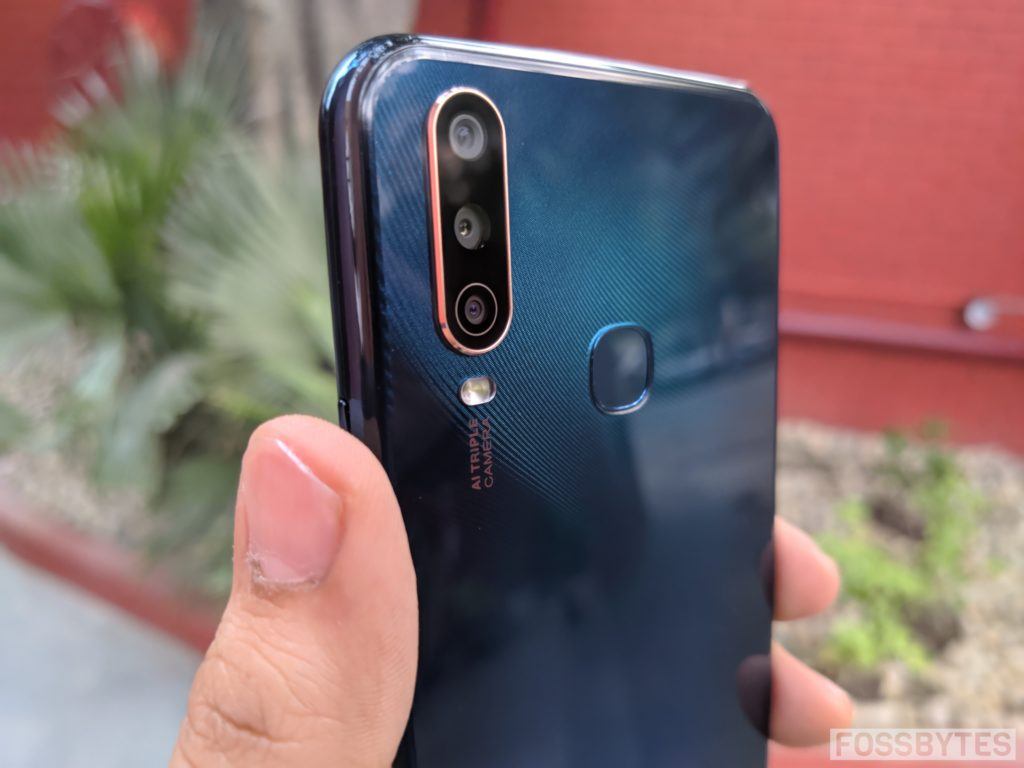
Speaking of the smartphone’s rear camera performance, the Vivo U10 captured good images, but from a distance. The moment you zoom in and try to take a closer look at the details, you won’t really find any. Upon zooming in, the image becomes pixelated and grainy. The wide-angle lens on the Vivo U10 performed well and captured a whole lot of area.

As for the device’s HDR mode, it aptly highlighted the dark areas of an image and gave me a well-lit photo. However, the image still lacked details and I felt disappointed. The bokeh mode on the smartphone worked above average. The effect seemed fine and did not appear to be a cheap software gimmick.

Coming to the front camera, it took decent images, however, it also lacked details.

Although the smartphone’s color production was decent and didn’t oversaturate the images, the lack of details was a constant problem.
Here are the Vivo U10 camera samples for you to have a look at.
Performance and Specs Sheet
Vivo U10 Specifications
| Specifications | Vivo U10 |
| Display | 6.35-inch |
| Resolution | HD+ |
| Battery | 5,000mAh |
| RAM | 3GB/4GB |
| OS | FunTouch OS 9.1 (based on Android 9.0 Pie) |
| Storage | 32GB/64GB |
| Rear Camera | 13MP, 8MP, 2MP |
| Front Camera | 8MP |
| Processor | Snapdragon 665 |
| Phone Features | 18W fast charging, Ultra Game mode |
| Starting Price (Current) | Rs 9,999 |
Performance, Battery and OS
The smartphone worked its way through most of the tasks I did. Be it going through my social media accounts, watching videos, or just calling, everything happened decently. The Vivo U10 gave out an above-average performance even when several apps were present in the background. However, it did stammer at times and the usage didn’t prove to be a cakewalk. Other than that, the audio quality was fine but it wasn’t amazing as the output was just satisfactory even on high volumes.
The Vivo U10 has its battery as one of the highlights and it stands true to its size. The 5,000mAh battery lasted me a day (more than that) of normal usage and a couple of days on standby. Long battery life is something we users need badly, and this device is kind enough to offer us that.
On the OS front, the Vivo U10 runs the company’s FunTouch OS 9.1, which is based on Android 9.0 Pie. One thing I love about the Vivo UI is that it still enables the notification window from the bottom end, much like how iPhone’s control center used to pop up. I have always loved that and I loved it in the Vivo U10.
However, what I didn’t love about the smartphone is the bloatware it comes equipped with. Other than that, the UI is simple and easy to use.
Among other things, the fingerprint scanner and the face unlock feature worked decently and were able to unlock the device within a second.
Verdict
The Vivo U10 falls in the budget segment, trying to compete with various companies with Xiaomi being the main contender. The smartphone has its goods: it is good-looking, there are three rear cameras, the processor is decent, and the battery is huge. However, it still isn’t excellent if we compare it with the Xiaomi devices.
Nonetheless, sans the comparison, the Vivo U10 is a decent budget smartphone and you can go for it if MIUI is not to your liking!
Also Read: Redmi 8A Is Proof That No One Does Budget Smartphones Better Than Xiaomi






